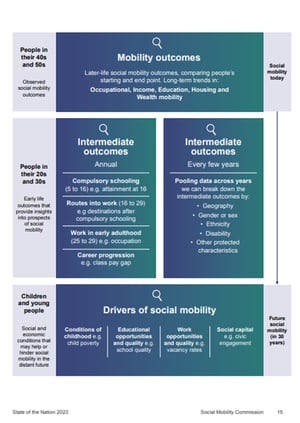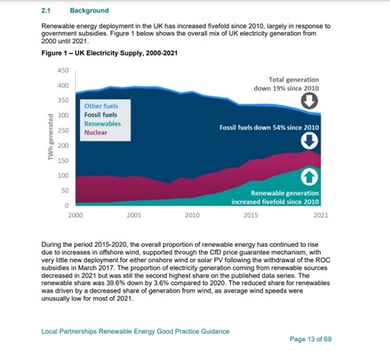How to Write an Effective Public Sector Report Introduction
 Ross McDermott
·
5 minute read
Ross McDermott
·
5 minute read
Crafting an attention-grabbing report introduction is absolutely crucial when it comes to tackling public sector report writing.
Why, you ask?
Well, because your report has the potential to reach a vast audience, including both the general public and senior staff within your organisation.
Plus, a well-crafted introduction not only sets the stage for the rest of your report but also provides a crystal-clear and easily digestible outline.
In today's blog post, we’ll be going over how to write a report introduction, good practice and analysing effective examples of introductions in published articles.
The Importance of an Effective Introduction
When writing a report, it can be tempting to focus on the ‘meat’ of the report, however, the introduction plays an equally important role in report writing. Especially in regard to how your reader engages with the report and retains information.
An ineffective introduction can leave the reader feeling like they’re missing vital context on the background of your report. They may also feel frustrated if a key summary is not readily available or poorly written.
Likewise, an ineffective conclusion can leave your reader with more questions than answers and may hinder their ability to fully retain the key information.
The Differences Between a Foreword, Executive Summary and an Introduction
A foreword, executive summary and introduction are all likely to feature at the beginning of the report, but all have different functions and the one you use may depend on the type of report.
A foreword is typically a more personal way to introduce the report and is typically written by someone other than the author of the report. They are used to introduce the reader to the report writer and why they have chosen the topic for the report.
An executive summary usually contains a condensed version of the report, including conclusions and clear takeaways. Unlike an introduction which typically explains what the report will be about and what sections will feature.
What to Include in a Report Introduction
As the 1st point of entry into your report, it’s important that your introduction is effective, and engaging and gives clear context to why you’re writing the report. A good way to write an effective introduction is to consider the what, when, why and how.
-
What – What is your report about? You may want to include a brief summary of your findings.
-
When – It may not be necessary to include a full timeline of your report in your introduction, you can include this elsewhere in your report, but a brief timeline of your report may be useful to your reader by providing additional context.
-
Why – Why did you create the report? It’s important to give the reader the necessary background context of your report so they can fully understand it. What may seem simple to you, may be confusing for your reader if they lack the context or don’t know enough about the topic.
-
How – What type of research did you do to complete your report? How did you come up with your findings? This also gives you the opportunity to inform your reader of any limitations to your report.
How Long Should a Report Introduction Be?
The length of your introduction may be dependent on the type of report you’re doing, a financial report may have a shorter introduction than a case study which requires more context for the reader.
However, in general, your introduction shouldn’t be longer than a page or two, which should give you enough space to write a concise introduction. You don’t need an in-depth description of your entire report, just a brief overview of the key points of your report.
From a formatting point of view, giving the reader an outline of your report, including page numbers and titles, gives them something to refer back to, should they need to find a specific point in the report. You may find it easier to write your introduction after you have completed the report, as you’ll have a clear overview of what’s included and how you reached your conclusion.
5 Tips for Effective Report Introductions
To summarise, here are 5 simple tips you can use to ensure your introductions are effective in your report writing.
1. Consider the What, When, Why and How of Your Report for Your Introduction
You may not want to keep your introduction to a strict format, however considering the what, when, why and how of your report can give you something to work towards for your introduction, answering the key questions that readers may be looking for.
2. Be Wary of the Length of Your Introduction
Your introduction should give your reader a basic summary of what will follow in the report, as well as provide context that can be beneficial to the reader. For example, background research that shows why the report is needed or its importance to the topic.
3. If in Doubt, Leave Your Introduction Until After You’ve Finished Your Report
If you’re stuck on your introduction, it may be beneficial to leave it until you have finished the rest of your report. This will give you a better idea of what’s included in the report and what’s important to inform the reader of in the introduction, so they can better understand the report in full.
4. Set Your Reader Up for the Rest of the Report
Your introduction is a good way to make your reader aware of the key points of your report and allows you to point them towards parts of the report they should pay close attention to. It may be useful to provide them with key takeaways so they have an initial understanding of the findings of your report.
5. Add a Contents Page
Your reader may expect a similar format to reports they have read before, often this includes a content page. Including a content page just before or after the introduction allows the reader to easily find parts they may be looking for. To see what else makes a good report, check out our 3 effective report-writing tips.
Two Report Introduction Examples From the Public Sector
1. State of the Nation 2023: People and Places
The government’s latest State of the Nation 2023 report provides good examples of what to include in your introduction.
Straight away, this introduction includes a 'highlights' section which can help the reader retain and understand what's included. Graphics are also used in the introduction which shows information in a visually appealing way and breaks up the introduction from being too long.
Stats suggest that visuals are processed 60’00 times faster than text, using graphics in your report allows you to include more information and give a more concise summary of your report than you would over text.
2. Renewable Energy Good Practice Guidance 2023
The Renewable Energy Good Practice Guidance 2023 report released by the Local Government Association also provides a good example of including background information and graphics that provide further context for the reader related to the report. Especially useful for a topic which the reader may be approaching with little or no background information.
As the topic is more complex it does feature a longer introduction than the ‘state of the nation’ report. There isn’t a ‘one size fits all’ approach for introductions, you may find that your report introduction needs to be longer to introduce the reader to a complex topic or complex information.
If your reader is confused or lacks understanding from the start it will be difficult for them to understand and absorb the information featured elsewhere in the report. Here’s a quick guide to presenting complex information with simplicity.
Take a read of both report introductions above to get a sense of how to write an introduction depending on your topic and its complexity.
Looking for tips for improving your conclusion report writing? We've covered that here.
Want to Further Improve Your Report Writing? Join our Effective Report Writing Course
Our Effective Report Writing course is designed to help you produce excellent and efficient reports for today’s ever-changing workplace, helping you write quickly, accurately and clearly. View the full agenda and book your place here.
Previous experience in EdTech and public sector training. Striving to provide public sector professionals with resources and content to improve their skills and achieve their goals.


-1.jpg?width=800&height=525&name=1%20(2)-1.jpg)



%20com.jpg)

